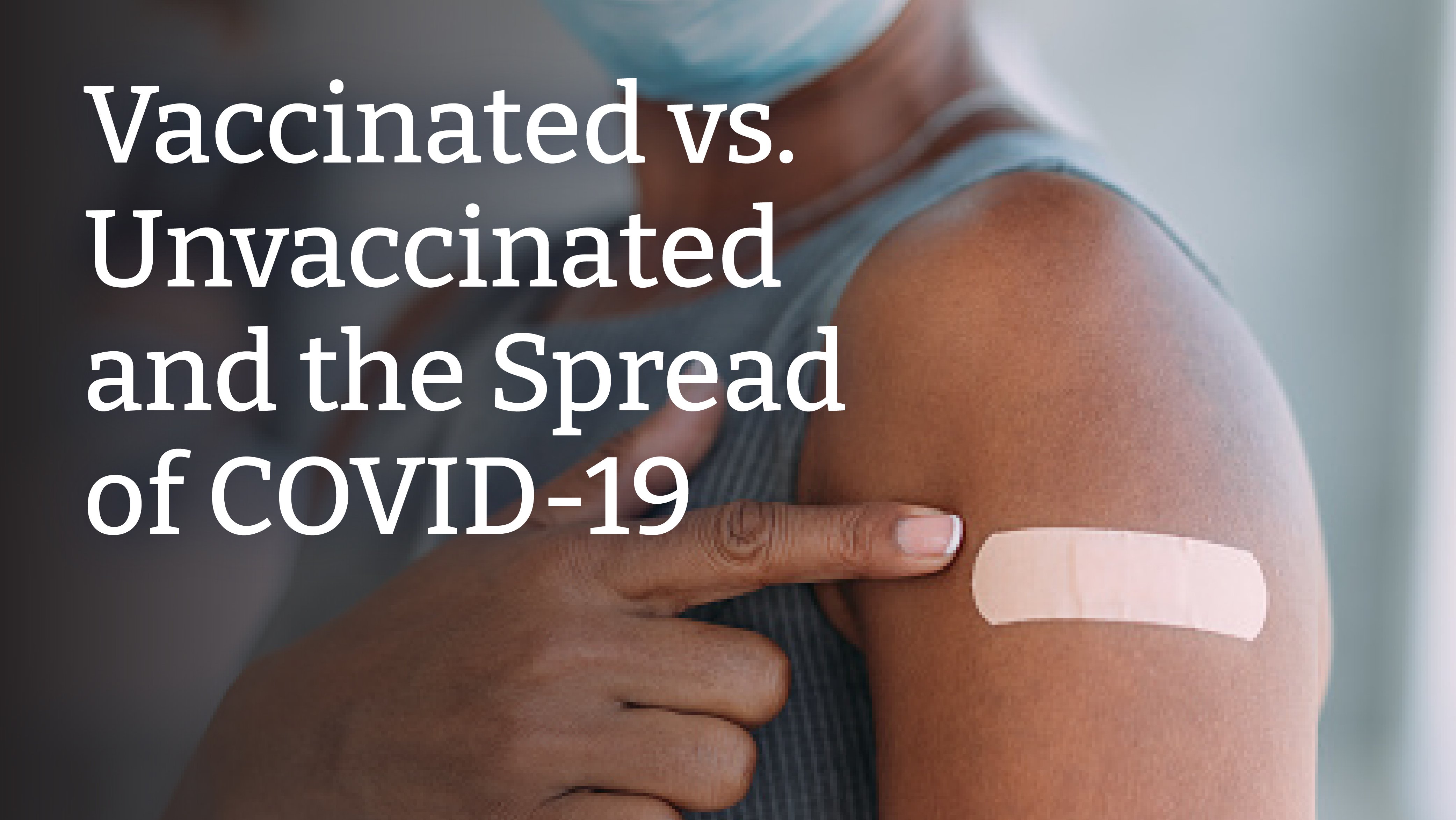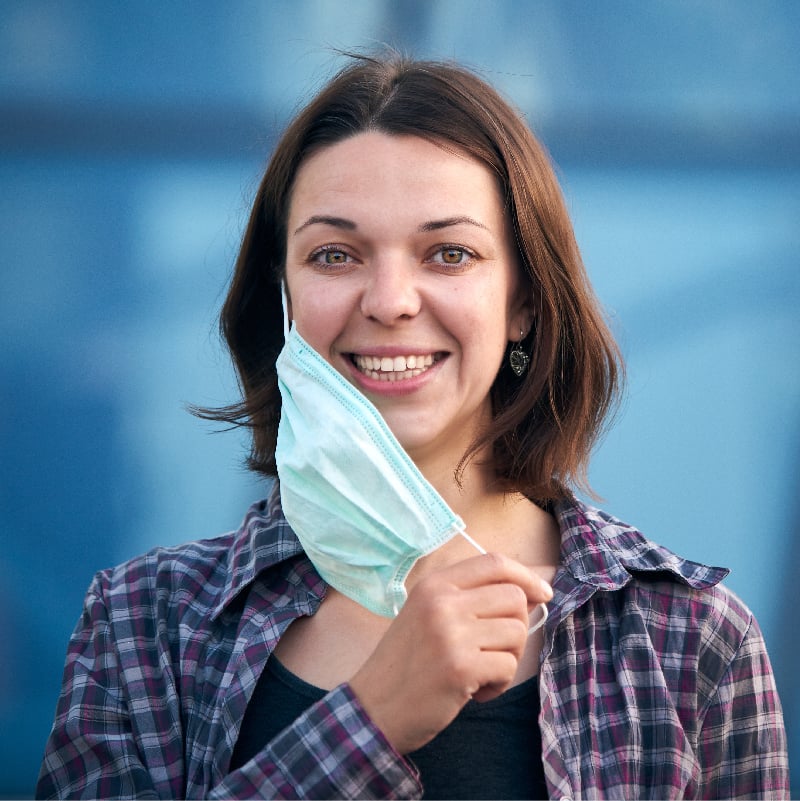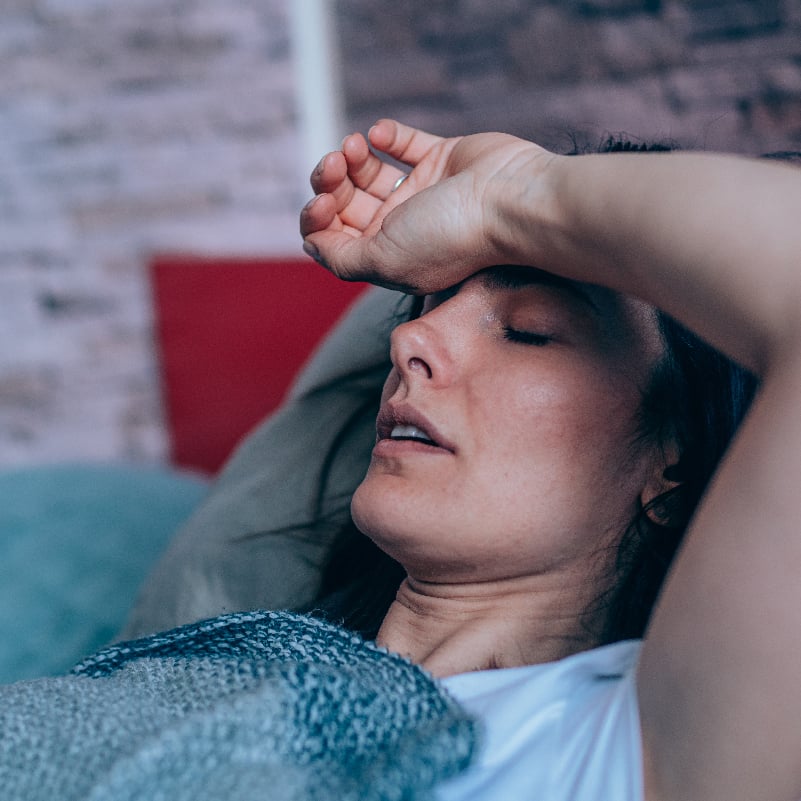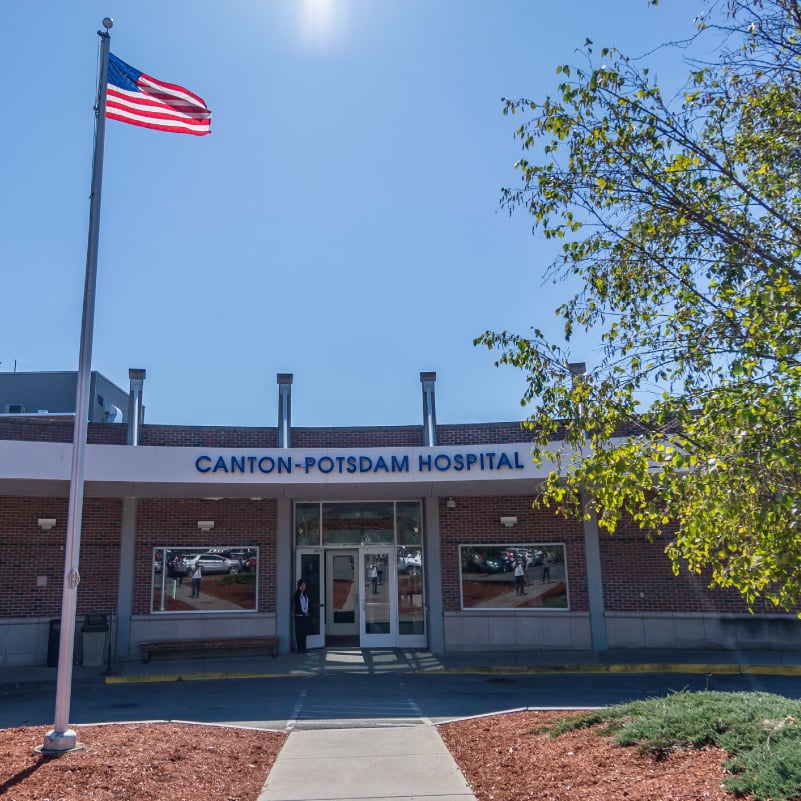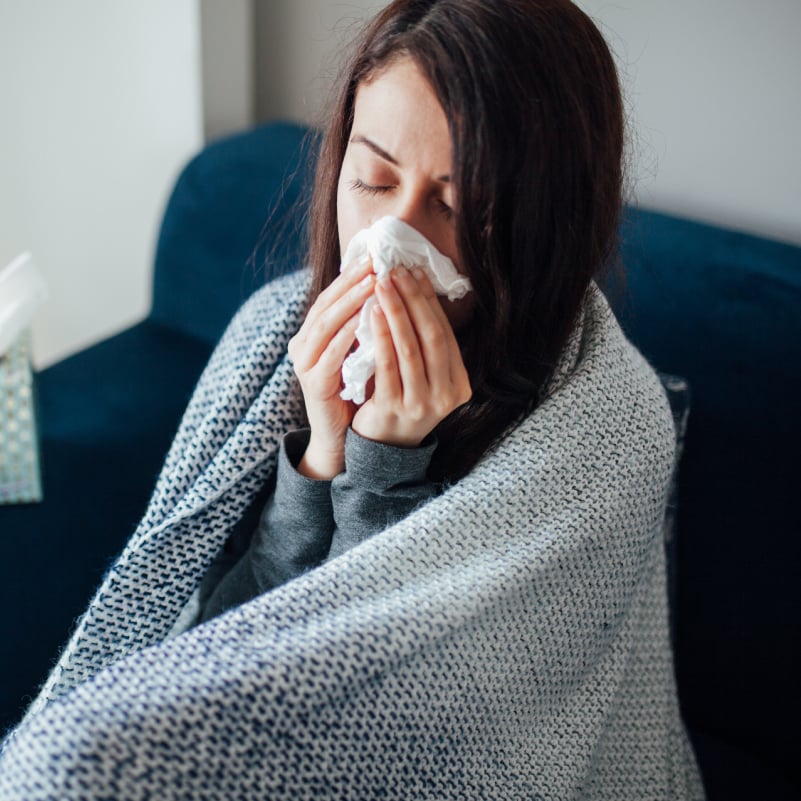The numbers don’t lie. The majority of COVID-19 patients who are currently hospitalized are unvaccinated. More than 200 million individuals in the United States alone have received the COVID-19 vaccine, preventing the vast majority from infection and nearly all from severe illness, hospitalization, and death.
Yet there is still an argument being made that unvaccinated and vaccinated individuals are at equal risk of contracting COVID-19 and spreading it to others. To better explain the facts behind vaccination, viral particle spread, and how it all works, we turned to Maryrose Laguio-Vila, MD, Chief of the Infectious Disease Unit with Rochester Regional Health.
How COVID-19 spreads – and is stopped
Research shows the COVID-19 virus is primarily dispersed through aerosol droplets. According to the CDC, these droplets can be spread in several ways:
- Inhaling air when close to an infected person who is exhaling small droplets and particles that contain the virus
- Being near enough to these small viral droplets and particles for them to land on the eyes, nose, or mouth – often through a cough or sneeze
- Touching eyes, nose, or mouth with hands that have the virus on them.
For people who have received one of the three FDA-approved COVID-19 vaccines, there is a level of protection offered by the body’s immune system.
The Pfizer and Moderna vaccines use mRNA (messenger RNA), which is essentially a code for the cells in your body. This code teaches the cells to make the protein that is part of the coronavirus structure. When that protein is then seen by the person’s immune system, it learns how to recognize that protein and fight coronavirus should the body see that protein again.
The Johnson & Johnson vaccine uses a disabled adenovirus – a type of virus similar to the common cold – to teach your immune system how to fight COVID-19. Since the adenovirus virus is disabled, it is completely separate from coronavirus and cannot replicate once it is inside your body.
Once injected, the disabled adenovirus gives instructions to the body’s immune system on how to recognize and fight the coronavirus if the body ever becomes infected.
The nuance of breakthrough cases
A breakthrough COVID-19 case is determined by the detection of the SARS-CoV-2 virus in someone who has completed their single or double dose of COVID-19 vaccination and waited two weeks after their last vaccine. It is important to note that a case is counted by a positive PCR test – independent of whether or not a person has symptoms.
Statistically speaking, it is much less likely to test positive for the COVID-19 virus after getting vaccinated compared to remaining unvaccinated.
An article published in the Journal of American Medical Association in November points to a survey in which nearly 100,000 patients were observed. The authors noted three main differences:
- Vaccinated patients are 2/3 less likely to harbor COVID-19 compared to unvaccinated people
- Vaccinated people carry viral particles for shorter amounts of time compared to unvaccinated people
- Viral particles in vaccinated people are weaker than those found in unvaccinated people
A separate study published in the journal Nature Medicine focused on nearly 16,000 COVID-19 patients and found viral loads (the amount of viral particles found in an individual sample) were much lower in breakthrough vaccinated cases as compared to unvaccinated cases.
“This means less volume for a shorter period of time with weaker virus, which may translate to less forward transmission,” Dr. Laguio-Vila said.
Patients who experienced breakthrough infections were likely to be older and have additional underlying conditions, according to the Nature Medicine study. Even if those patients are hospitalized, they are less likely to develop severe symptoms, more likely to recover from their illness quickly, and much less likely to die from COVID-19 compared with unvaccinated people.
Other studies of household contacts point to a very small number of secondary COVID-19 cases linked to breakthrough cases. Secondary breakthrough cases are individuals who contract COVID-19 after being exposed to a fully vaccinated person who tests positive for COVID-19 and is symptomatic.
“Although there can be breakthrough infections, scientists are learning that the vaccine attenuates the virus to make it less likely for those individuals with breakthrough infections to have a severe or fatal infection compared to those who did not get the vaccine at all,” Dr. Laguio-Vila said.
What we can do
When it comes to understanding the spread of COVID-19 and vaccination, Dr. Laguio-Vila suggests reorienting our expectations about how to approach both the virus and the vaccine.
“There was a great hope that this vaccine would be a silver bullet,” Dr. Laguio-Vila said. “But now, I think we need to readjust our expectations based on what we are learning. For us to expect zero infections when half of the globe is vaccinated, there is a hubris in that. This is a humbling virus that we are learning to prevent and evade using science. We need to evolve our understanding as much as the virus evolves.”
As we work to keep our minds open, there are steps we can continue to take to ensure we are as well protected as we can be against COVID-19.
Get vaccinated: COVID-19 vaccines are available at local pharmacies, doctor’s offices, and other locations in many of our communities. This is proving to be the best form of prevention we have against the virus.
Get boosted: If you are 18 years old or older and received your COVID-19 vaccine at least two months ago (Johnson & Johnson), or five months ago (Pfizer-BioNTech or Moderna), you are now eligible for a booster shot. For 12 to 17 year olds who received the Pfizer vaccine, the booster shot has also been approved.
Wear a mask: Properly wearing a medical mask while at indoor public locations can reduce the risk of contracting COVID-19
Practice good hand hygiene: Wash your hands with soap and water frequently, especially after spending time in public spaces. This means rinsing for at least 20 seconds.
Physical distancing: Stay six feet or more apart from other people in public spaces.

